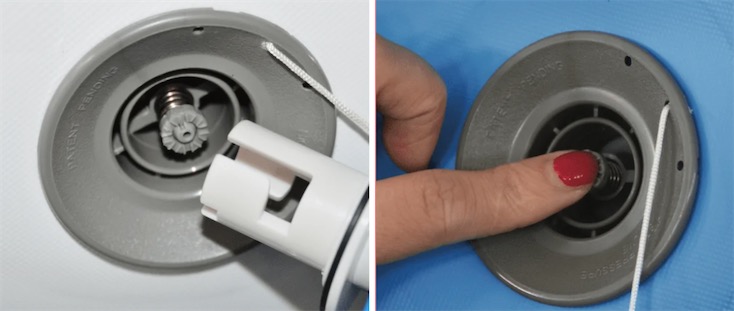First please check if the voltage matches. Please connect the air hose to the proper port before turning the air pump on.
During inflation, ensure the air valve is in the closed position by pushing on the stem to see it if depresses about 1/4 inch (FIG. 4). If it does not depress 1/4 of an inch, then rotate the stem 1/4 turn left, and it should pop out to a shut position. The valve is now closed. If the valve is open during inflation, then it will release air from the tube when the pump is removed.
During deflation, ensure valve is in open position so air will come out and product will deflate.

When inflating your Products ,Be sure that someone is manning the air pump at all times to prevent over inflation. The body of the product should be inflated to 1.75 psi and allowed to balance back to the point that the PRV will not release air.
A properly inflated slide component will feel very solid and firm to the touch. You should be able to slap it and hear a pinging sound. If you cannot locate your gauge, then you can fill up the product with air until the PRV starts to release air to prevent the popping or damaging of the internals of the product. Please note the PRV WILL NOT RELEASE air fast enough to prevent damage to the unit if someone is not paying attention to the air pump. This methodology of inflating your product works fine as long as you have a properly functioning PRV valve; therefore, play close attention using this method of inflation.
If in doubt, stop filling the slide and see if the PRV has started to release air. If the PRV is not releasing air, then continue to inflate the slide and monitor the PRV. If you find that the PRV is releasing air, stop inflating immediately, and allow the air to release. Once the pressure in the inflatable reaches the preset psi of the PRV, the valve will stop releasing air.
During deflation, ensure valve is in open position so air will come out and product will deflate.